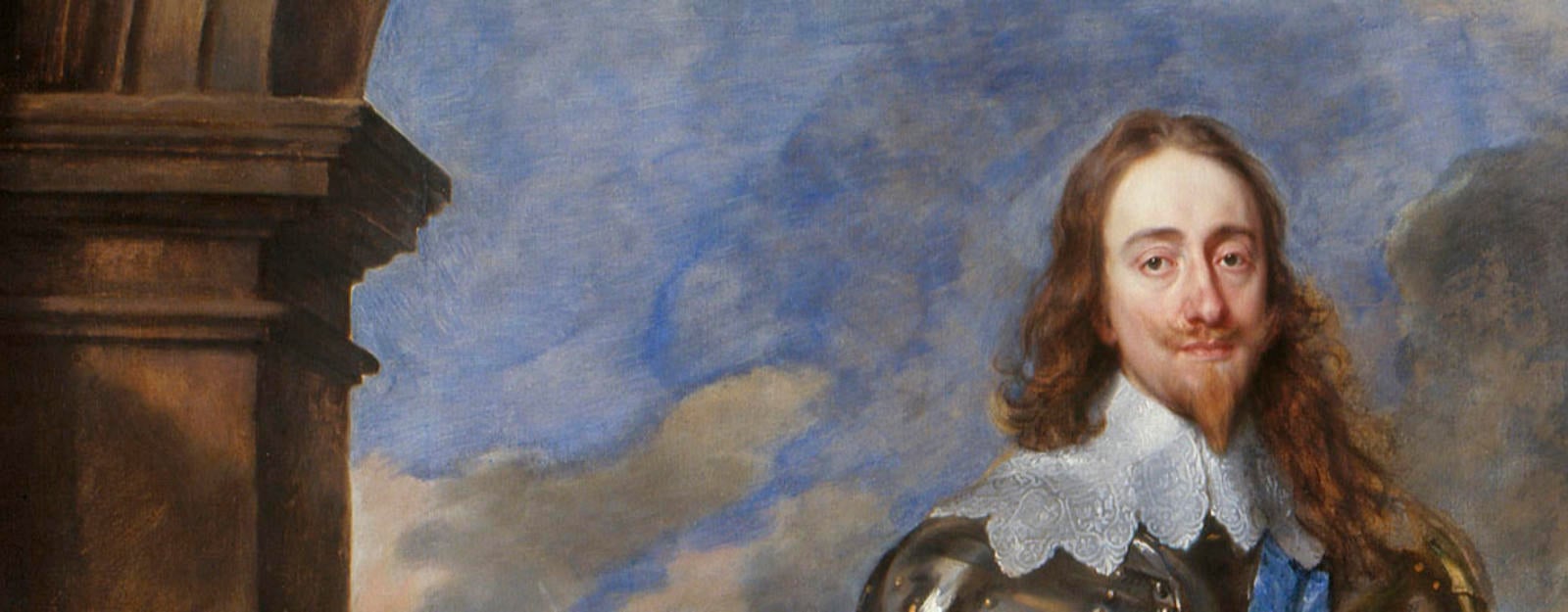Stuarts
Charles I, King of Great Britain (1600-49)

- Born 1600, Dunfermline Palace
- Died 1649, Palace of Whitehall [London]
Charles I was the second son of James VI and I, and Anne of Denmark, and until the premature death of his elder brother, Henry, Prince of Wales, in 1612, was never intended to take the throne. Although rather sickly as a child, Charles flourished in the educated and cultured Stuart court, and shared his brother’s passion for art and collecting. He acceded to the throne in 1625.
In 1623, Charles, as Prince of Wales, had travelled to Madrid for marriage negotiations with the Spanish Royal family. These were unsuccessful but while in Spain Charles had access to the astonishing collection of Old Master paintings and sculpture at the court, and to contemporary artists such as Diego Velazquez. He saw at first-hand what art could achieve as a statement of kingly splendour and power. Charles returned to Britain with magnificent works by Titian, Correggio and Giambologna, and with the most important of his acquisitions, the full-scale designs by Raphael for Pope Leo X’s tapestries in the Sistine Chapel, the Raphael cartoons. Charles was a great patron of the Mortlake tapestry workshops and intended the cartoons as a guide for the weavers there.
During the 1620s, Charles continued to purchase works for his collection, most notably a superb collection of paintings and sculpture from the Duke of Mantua in 1628. The most significant part of this collection, nine canvases by Mantegna depicting the Triumphs of Caesar, was negotiated later, between 1629-32.
Charles’s passion for contemporary art, and for the patronage of contemporary artists was also fuelled in the 1620s and his interests as a collector and patron became increasingly widely-known across Europe. As early as 1623, he acquired the Rubens Self Portrait and hung it in his palace at Whitehall – commissions to Rubens for the Banqueting House ceiling followed in the 1630s.
Several leading European artists and craftsmen were patronised by Charles I and his wife, Henrietta Maria. The most famous of these was Sir Anthony van Dyck, whose style of portrait painting has come to define this chapter of the Stuart era, and whose appointment as ‘principall Painter’ to the King in 1632 heralded a decade of brilliant, transformative image-making for Charles I and his court.
In 1637 Abraham van der Doort, keeper of the King’s collection, began an inventory of the works in the Royal Collection. This document, still in existence, is crucial not only in recording what the King owned and where it was then displayed, but as a commemoration of the astonishing treasures of the British Royal collection, almost entirely sold off and dispersed after the King’s execution in 1649.
In 1623, Charles, as Prince of Wales, had travelled to Madrid for marriage negotiations with the Spanish Royal family. These were unsuccessful but while in Spain Charles had access to the astonishing collection of Old Master paintings and sculpture at the court, and to contemporary artists such as Diego Velazquez. He saw at first-hand what art could achieve as a statement of kingly splendour and power. Charles returned to Britain with magnificent works by Titian, Correggio and Giambologna, and with the most important of his acquisitions, the full-scale designs by Raphael for Pope Leo X’s tapestries in the Sistine Chapel, the Raphael cartoons. Charles was a great patron of the Mortlake tapestry workshops and intended the cartoons as a guide for the weavers there.
During the 1620s, Charles continued to purchase works for his collection, most notably a superb collection of paintings and sculpture from the Duke of Mantua in 1628. The most significant part of this collection, nine canvases by Mantegna depicting the Triumphs of Caesar, was negotiated later, between 1629-32.
Charles’s passion for contemporary art, and for the patronage of contemporary artists was also fuelled in the 1620s and his interests as a collector and patron became increasingly widely-known across Europe. As early as 1623, he acquired the Rubens Self Portrait and hung it in his palace at Whitehall – commissions to Rubens for the Banqueting House ceiling followed in the 1630s.
Several leading European artists and craftsmen were patronised by Charles I and his wife, Henrietta Maria. The most famous of these was Sir Anthony van Dyck, whose style of portrait painting has come to define this chapter of the Stuart era, and whose appointment as ‘principall Painter’ to the King in 1632 heralded a decade of brilliant, transformative image-making for Charles I and his court.
In 1637 Abraham van der Doort, keeper of the King’s collection, began an inventory of the works in the Royal Collection. This document, still in existence, is crucial not only in recording what the King owned and where it was then displayed, but as a commemoration of the astonishing treasures of the British Royal collection, almost entirely sold off and dispersed after the King’s execution in 1649.
Reigned: 1625–49







